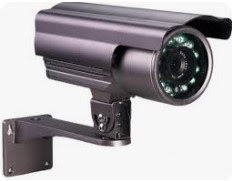In IP camera installations, connecting network switches to a Network Video Recorder (NVR) typically involves setting up a local area network (LAN) to facilitate communication between the IP cameras, the network switches, and the NVR. Here's a step-by-step guide on how to connect network switches to an NVR in IP camera installations:
1. Plan Your Network Layout: Before connecting any devices, plan
your network layout. Determine the placement of your IP cameras, the location
of your NVR, and where your network switches will be placed. Ensure that the
distance between devices doesn't exceed the maximum cable length for Ethernet
connections (typically 100 meters for CAT5e or CAT6 cables).
2. Install and Configure Network
Switches: Install
your network switches in suitable locations. Connect them to power sources and
ensure they are powered on. Configure basic network settings such as IP
addresses, subnet masks, and default gateways according to your network
requirements.
3. Connect IP Cameras to Network
Switches: Use
Ethernet cables to connect each IP camera to the network switches. Ensure that
the cables are securely plugged into both the camera's Ethernet port and the
switch port.
4. Connect Network Switches to NVR: Use Ethernet cables to connect one
or more ports on the network switches to the Ethernet ports on the NVR. If your
NVR has multiple Ethernet ports, you can use link aggregation (if supported) to
increase bandwidth and redundancy.
5. Configure NVR Settings: Access the NVR's settings interface
using a web browser or dedicated software. Configure the NVR to recognize and
manage the connected IP cameras. This typically involves adding the cameras to
the NVR's device list and specifying their IP addresses and login credentials.
6. Test the System: Once everything is connected and
configured, test the system to ensure that the IP cameras are communicating
with the NVR correctly. Check live video feeds from each camera to verify that
they are displaying properly on the NVR's interface.
7. Optimize Network Performance: Monitor network performance and
adjust settings as needed to optimize performance. This may include configuring
Quality of Service (QoS) settings on the network switches to prioritize video
traffic, ensuring sufficient bandwidth for smooth video streaming.
8. Implement Security Measures: Ensure that your network is secure
by configuring firewall settings, using strong passwords, and implementing
encryption protocols such as HTTPS for remote access to the NVR.
By following these steps, you can effectively connect network switches to an NVR in IP camera installations and create a reliable and efficient surveillance system.









0 Comments